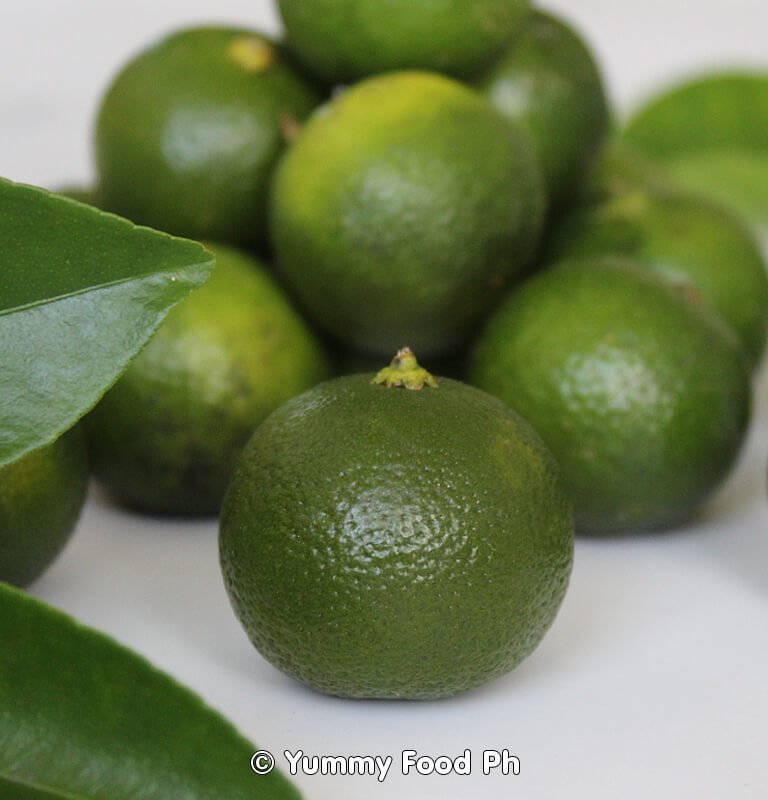The fruit tree known as Calamansi or calamondin (Citrfortunella microcarpa) is native to the Philippines. The Versatile Filipino Citrus Treasure
Filipinos can cultivate the calamansi plant in their front or backyards, or even in large boxes, to ensure a year-round supply of these useful citrus fruits. It can flourish in a range of environmental conditions. When fully grown, the calamansi tree can reach a height of 2 to 7 1/2 meters. It begins to produce fruit after one to two years. The fruit has a round shape, a diameter of 2 to 4.5 cm, and is green to yellow in color. When harvesting, avoid damaging the fruit’s skin by leaving a section of the stem attached to it in order to keep the fruit fresh.
The calamansi, like its relatives, the mandarin, pomelo, and sweet orange, is a fruit high in calcium, iron, phosphorus, and Vitamin C, also known as ascorbic acid. It is the most popular and widely consumed citrus fruit in the country. Its juice is nourishing and is typically put into a fruit beverage that aids in the prevention of respiratory illnesses. It can be added to a variety of food dishes, such as steak, adobo, toyomansi sauce or used as a flavoring agent in sweets like leche flan.
Calamansi is frequently used as a garnish for foods like pancit bihon, sisig, siomai, arroz caldo, and many more. Its sour flavor gives our taste buds an amazing zing. This makes it the ideal complement to many recipes as the final step.
Calamansi (Citrofortunella microcarpa), also known as calamondin, is a prized citrus tree native to the Philippines that has become an indispensable part of Filipino daily life. This hardy, prolific plant thrives in diverse conditions – from backyard gardens to urban container pots – making it accessible to nearly every Filipino household.
Citrofortunella microcarpa (syn. ×Citrofortunella microcarpa), commonly called calamansi or calamondin, is an intergeneric hybrid citrus belonging to the Rutaceae family. This small, evergreen tree (2-7.5m) produces spherical, thin-skinned hesperidium fruits (25-45mm diameter) containing 6-10 segmented juicy vesicles. The fruit’s exocarp transitions from chlorophyll-rich green to carotenoid-dominant yellow during ripening. Its notable sour flavor profile stems from high citric acid content (4-5% juice acidity) combined with limonene-dominant essential oils. As a protandrous flower, it exhibits perfect hermaphroditic blooms with superior ovary development. The plant demonstrates remarkable ecological plasticity, thriving in tropical/subtropical climates (USDA zones 9b-11) with tolerance to various soil pH levels (5.5-7.5). Its hybrid origin combines traits from Citrus reticulata (mandarin) and Fortunella sp. (kumquat), resulting in cold-hardiness uncommon to most citrus species.
Growth & Characteristics
🌳 Compact & Productive:
- Reaches 2-7.5 meters at maturity
- Bears fruit within just 1-2 years of planting
- Produces year-round with peak seasons
🍊 Distinctive Fruit Features:
- Small, round shape (2-4.5 cm diameter)
- Vibrant green when young, golden-yellow when ripe
- Thin, delicate skin protecting juicy, acidic flesh
Cultivation Tips
🌱 Planting Secrets:
- Thrives in both ground and containers
- Prefers well-draining soil and partial sun
- Regular pruning enhances fruit production
✂️ Harvesting Know-How:
- Use clippers to leave 1cm of stem attached
- Handle gently to avoid bruising thin skin
- Store at room temperature for 1-2 weeks
Why Every Filipino Home Needs One
🍋 Culinary Essential:
- Key ingredient in sauces, drinks, and marinades
- Perfect souring agent for sinigang and pancit
- Makes the ultimate sawsawan (dipping sauce)
🌿 Health Benefits:
- Packed with vitamin C (more than lemons!)
- Natural digestive aid
- Contains powerful antioxidants
Fun Fact: A single mature calamansi tree can produce 500-1,000 fruits annually – enough to supply an entire neighborhood’s cooking needs!
Do you have a calamansi tree at home? Share your favorite uses for this citrus gem in the comments! 🌱🍊
Table of Contents
Visit us on YouTube: Yummy Food PH

